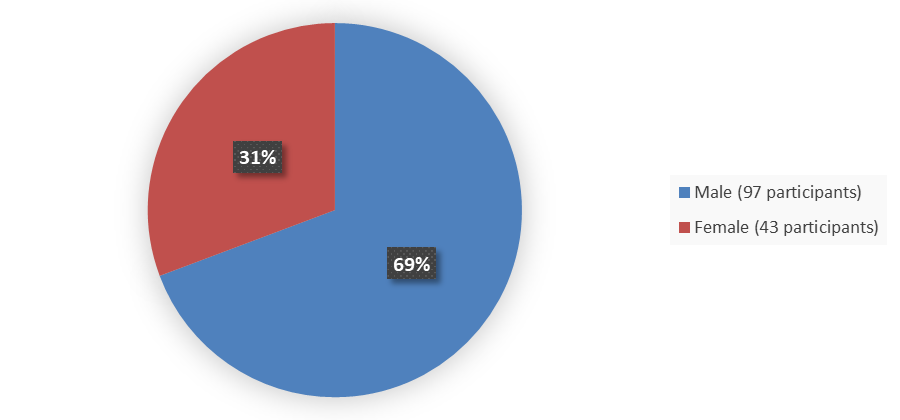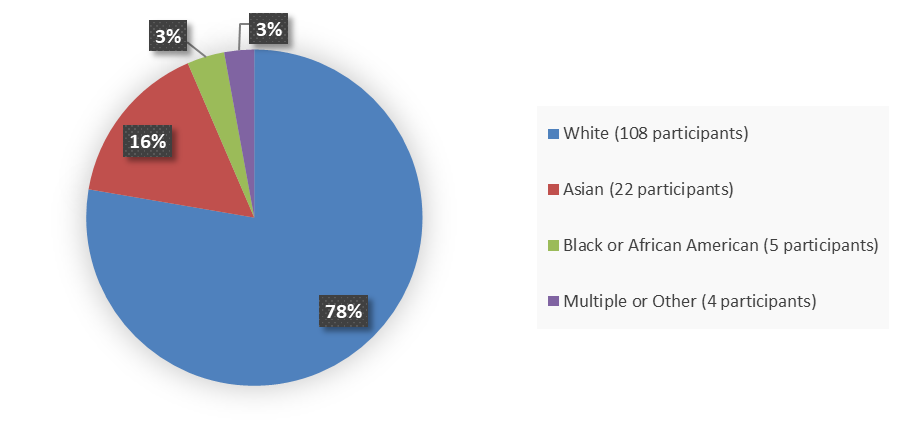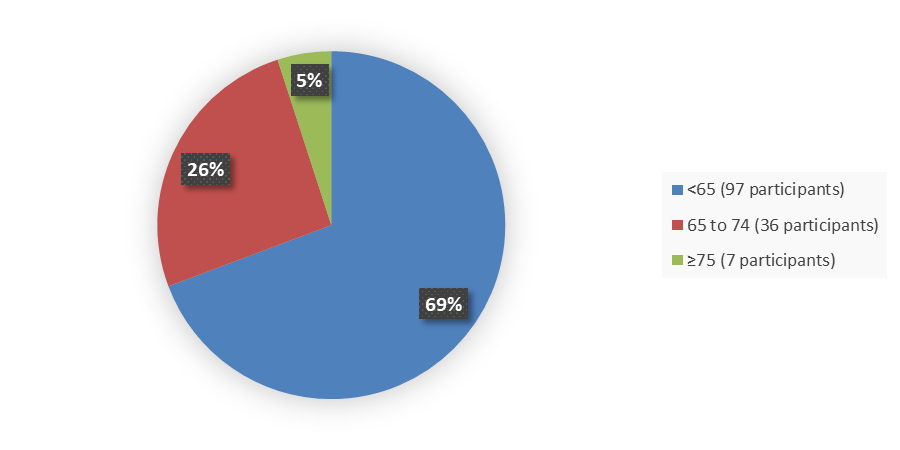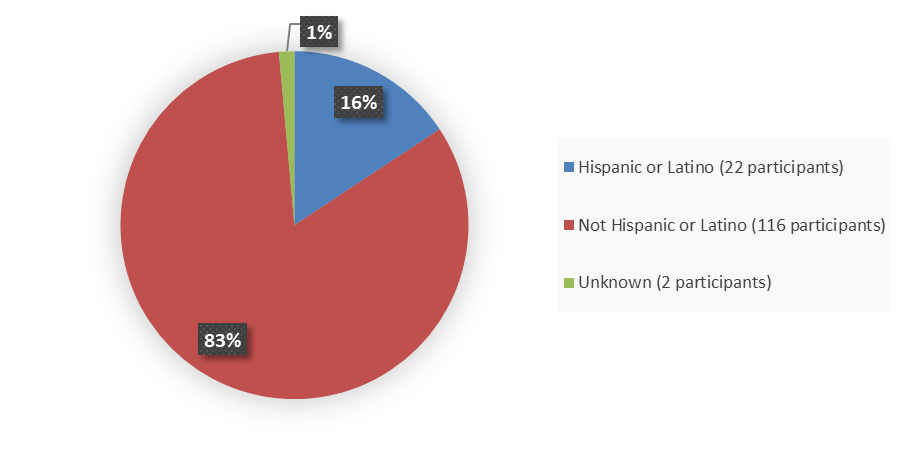Drug Trials Snapshots: WAINUA
HOW TO USE THIS SNAPSHOT
The information provided in Snapshots highlights who participated in the key clinical trials that supported the original FDA approval of this drug, and whether there were differences among sex, race, age, and ethnic groups. The “MORE INFO” bar shows more detailed, technical content for each section. The Snapshot is intended as one tool for consumers to use when discussing the risks and benefits of the drugs.
LIMITATIONS OF THIS SNAPSHOT
Do not rely on Snapshots to make decisions regarding medical care. Always speak to your healthcare provider about the benefits and risks of a drug.
Some of the information in this Snapshot is for presentation purposes and does not represent the approved conditions of use of this drug. Refer to the WAINUA Prescribing Information for all the approved conditions of use of this drug (e.g., indication(s), population(s), dosing regimen(s), safety information).
Snapshots are limited to the information available at the time of the original approval of the drug and do not provide information on who participated in clinical trials that supported later approvals for additional uses of the drug (if applicable).
WAINUA
(way-noo’-ah)
Ionis Pharmaceuticals, Inc.
Approval date: December 21, 2023
DRUG TRIALS SNAPSHOT SUMMARY:
What is the drug for?
WAINUA is a drug for the treatment of nerve damage in adult patients with hereditary transthyretin-mediated amyloidosis. Transthyretin-mediated amyloidosis is the buildup of abnormal deposits of a substance called amyloid in the body’s organs and tissues. Amyloid disrupts the function of organs and tissues.
How is this drug used?
WAINUA is injected under the skin by a patient or their caregiver once every month.
Who participated in the clinical trials?
The FDA approved WAINUA based on evidence from one clinical trial (Study 1/NCT04136184) in which 144 patients with hereditary transthyretin-mediated amyloidosis received WAINUA. The trial was conducted at 52 sites in 16 countries in North America, Europe, South America, Australia, and Asia. Of the 144 patients, 19 patients were from trial sites in the United States.
The benefits and side effects of WAINUA were evaluated in the same single clinical trial.
How were the trials designed?
WAINUA was evaluated in one clinical trial which enrolled patients with hereditary transthyretin-mediated amyloidosis (Study 1/NCT04136184). Patients received WAINUA once every month.
Healthcare providers rated the change in the signs and symptoms of neuropathy (nerve damage) from baseline to Week 35 using a numerical scale. The scores for the patients receiving WAINUA were compared to the scores for patients receiving placebo in a previously conducted study (NCT01737398).
How were the trials designed?
The efficacy and safety of WAINUA were established in one clinical trial. The trial evaluated WAINUA for the treatment of polyneuropathy of hereditary transthyretin-mediated amyloidosis in adults. Patients were randomized to receive either WAINUA 45 mg once every month (N=144) or inotersen 284 mg once per week (N=24), respectively, as subcutaneous injections. Efficacy assessments were based on a comparison of WAINUA with an external placebo group (60 patients ) in another study (NCT01737398). WAINUA was administered monthly for 35 weeks. The primary efficacy endpoint was the change from baseline to Week 35 in the modified Neuropathy Impairment Score +7 (mNIS+7).
The mNIS+7 is an objective assessment of neuropathy that comprises the Neuropathy Impairment Score (NIS) and Modified+7 composite scores. The NIS measures deficits in cranial nerve function, muscle strength, reflexes, and sensation. The Modified+7 assesses heart rate response to deep breathing, postural blood pressure, quantitative sensory testing, and peripheral nerve electrophysiology. Healthcare providers rate severity on a maximum possible score of 346.32 points. Higher scores represent greater severity of disease. The clinical meaningfulness of the objective findings on the mNIS+7 was supported by the secondary efficacy endpoint, change from baseline to Week 35 in the Norfolk Quality of Life Diabetic Neuropathy (Norfolk-QoL-DN) score. The Norfolk-QoL-DN is a patient-reported assessment that evaluates physical function or large fiber neuropathy, activities of daily living, symptoms, small fiber neuropathy, and autonomic neuropathy. The maximum possible score was 136. Higher scores represent higher impairment.
DEMOGRAPHICS SNAPSHOT
Figure 1 summarizes how many male and female patients were in the clinical trial use to evaluate efficacy and safety.
Figure 1. Baseline Demographics by Sex (Efficacy population)
Source: Adapted from FDA Review
Figure 2 summarizes the percentage of patients by race in the clinical trial used to evaluate efficacy and safety.
Figure 2. Baseline Demographics by Race (Efficacy Population)
Source: Adapted from FDA Review
Figure 3 summarizes the percentage of patients by age enrolled in the clinical trial used to evaluate efficacy and safety.
Figure 3. Baseline Demographics by Age (Efficacy population)
Source: Adapted from FDA Review
Figure 4 summarizes the percentage of patients by ethnicity enrolled in the clinical trial used to evaluate efficacy and safety.
Figure 4. Baseline Demographics by Ethnicity (Efficacy Population)
Who participated in the trials?
Table 1. Baseline Demographics of Efficacy Trials by Age, Race, Sex, and Ethnicity, Efficacy Population
| Demographic | WAINUA N=140 |
External Placebo N=59 |
|---|---|---|
| Sex, n (%) | ||
| Female | 43 (30.7) | 18 (30.5) |
| Male | 97 (69.3) | 41 (69.5) |
| Age, years | ||
| Mean (SD) | 52.8 (15) | 59.4 (14) |
| Median (min, max) | 51 (24, 82) | 63 (28, 81) |
| Age groups, years, n (%) | ||
| <65 | 97 (69.3) | 34 (57.6) |
| 65 to <75 | 36 (25.7) | 16 (27.1) |
| ≥75 | 7 (5) | 9 (15.3) |
| Race, n (%) | ||
| American Indian or Alaska Native | 0 | 0 |
| Asian | 22 (15.8) | 3 (5.1) |
| Black or African American | 5 (3.6) | 1 (1.7) |
| Native Hawaiian or other Pacific Islander | 0 | 0 |
| White | 108 (77.7) | 52 (88.1) |
| Other | 3 (2.2) | 2 (3.4) |
| Multiple | 1 (0.7) | 1 (1.7) |
| Ethnicity, n (%)1 | ||
| Hispanic or Latino | 22 (15.7) | 7 (11.9) |
| Not Hispanic or Latino | 116 (82.9) | 52 (88.1) |
| Missing | 2 (1.4) | 0 |
Source: Adapted from FDA Review
1 Taken from the safety population
Abbreviations: SD, standard deviation
What are the benefits of this drug?
Compared to patients who had received placebo, patients who received WAINUA had fewer symptoms of nerve damage.
What are the benefits of this drug (results of trials used to assess efficacy)?
Table 2 summarizes efficacy results for the evaluated patients for Study 1. The main trial endpoints were the change from baseline to Week 35 on mNIS+7. The key secondary efficacy endpoint was the change from baseline to Week 35 on the Norfolk QoL-DN total score. The mNIS+7 includes objective assessments of nerve damage and the Norfolk QoL-DN evaluates the patient’s experience with neuropathy.
Table 2. Clinical Primary Efficacy Results From Study 1 (Comparison of WAINUA Treatment in Study 1 to an External Placebo Control1), Efficacy Population
| Endpoint3 | Baseline, Mean (SD) | Change From Baseline to Month 9 LS Mean (SEM) | Treatment Difference LS Mean (95% CI) | P-value | ||
|---|---|---|---|---|---|---|
| WAINUA N=140 |
Placebo N=59 |
WAINUA | Placebo | |||
| mNIS+72 | 79.6 (42.3) | 74.1 (39.0) | 0.2 (1.9) | 9.2 (1.9) | -9.0 (-13.5, -4.5) | <0.001 |
| Norfolk QoL-DN2 | 43.5 (26.3) | 48.6 (27.0) | -3.1 (2.1) | 8.7 (2.1) | -11.8 (-16.8, -6.8) | <0.001 |
Source: WAINUA Prescribing Information
1 External placebo group from another randomized controlled trial (NCT01737398)
2 A lower number indicates less impairment or fewer symptoms
3 Based on an analysis of covariance (ANCOVA) model. Patients with a missing score at Week 35 had values multiply imputed using an imputation model.
Abbreviations: CI, confidence interval; LS, least squares; SD, standard deviation; SEM, standard error of the mean; mNIS+7, modified Neuropathy Impairment Score +7; Norfolk QoL-DN, Norfolk Quality of Life Diabetic Neuropathy score
Were there any differences in how well the drug worked in clinical trials among sex, race, and age?
- Sex: WAINUA worked similarly in males and females.
- Race: The number of patients of races other than White was small; therefore, differences in how WAINUA worked among races could not be determined.
- Age: The number of patients of ages 65 and older was small; therefore, differences in how WAINUA worked among age groups could not be determined.
Were there any differences in how well the drug worked in clinical trials among sex, race, and age groups?
Table 3 summarizes efficacy results by sex, race, and age.
Table 3. Subgroup Analyses of the Primary Endpoint, mNIS+71 (Study 1), Efficacy Population
| Subgroup | Baseline Mean | Change From Baseline at Week 35 LS Mean | Treatment Difference LS Mean (95% CI) | ||||
|---|---|---|---|---|---|---|---|
| N | WAINUA | N | Placebo2 | WAINUA | Placebo2 | ||
| Sex | |||||||
| Female | 43 | 76.4 | 18 | 64.1 | -4.1 | 5.2 | -9.3 (-17.5, -1.2) |
| Male | 97 | 81.0 | 41 | 78.6 | 2.7 | 11.2 | -8.5 (-13.6, -3.3) |
| Race | |||||||
| White | 108 | 777 | 53 | 76.2 | 0.8 | 9.6 | -8.8 (-13.7, -4.0) |
| All others | 31 | 79.8 | 6 | 55.7 | -0.9 | 7.4 | -8.3 (-22.0, 5.3) |
| Age, years | |||||||
| <65 | 97 | 76.5 | 34 | 69.7 | 0.2 | 6.4 | -6.2 (-11.6, -0.8) |
| ≥65 | 43 | 86.6 | 25 | 80.2 | -0.5 | 13.3 | -13.7 (-21.2, -6.2) |
Source: Adapted from FDA Review
1 A lower number indicates less impairment or fewer symptoms
2 External placebo group from another randomized controlled trial (NCT01737398)
Abbreviations: CI, confidence interval; LS, least squares; mNIS+7, modified Neuropathy Impairment Score +7
What are the possible side effects?
WAINUA may cause serious side effects including decreased vitamin A levels.
The most common side effects are decreased vitamin A levels, vomiting, excess protein in the urine, injection site reactions, blurred vision, and cataracts.
What are the possible side effects (results of trials used to assess safety)?
WAINUA may cause serious side-effects including decreased vitamin A levels.
Table 4 summarizes adverse reactions in patients with hereditary transthyretin-mediated amyloidosis. In addition, three serious adverse reactions of atrioventricular heart block (2%) occurred in WAINUA treated patients, including one case of complete atrioventricular block.
Table 4. Adverse Reactions Reported in at Least 5% of Patients Treated With WAINUA (Study 1), Safety Population
| Adverse Reaction | WAINUA N=144 % |
|---|---|
| Vitamin A decreased1 | 15 |
| Vomiting | 9 |
| Proteinuria | 8 |
| Injection site reactions2 | 7 |
| Blurred vision | 6 |
| Cataract | 6 |
Source: WAINUA Prescribing Information
1 Vitamin A decreased includes vitamin A deficiency and vitamin A decrease
2 Injection site reactions includes erythema, pain, and pruritis
Were there any differences in side effects among sex, race and age?
- Sex: The occurrence of side effects was similar in males and females.
- Race: The majority of patients in the trial were White. Differences in the occurrence of side effects could not be determined because of the small number of patients in other races.
- Age: The majority of patients in the trial were younger than 65 years old. Differences in the occurrence of side effects in patients 65 years of age or older could not be determined because of the small number of patients.
Were there any differences in side effects of the clinical trials among sex, race, and age groups?
Table 5 summarizes the occurrence of adverse events by subgroup.
Table 5. Overview of Side Effects by Sex, Race, Age, and Ethnicity in Patients Treated With WAINUA in Study 1, Safety Population
| Demographic Variable | WAINUA N=144 n/Ns (%) |
|---|---|
| Age group, years | |
| <65 | 9/100 (9.0) |
| ≥65 | 5/44 (11.4) |
| Sex | |
| Female | 6/44 (13.6) |
| Male | 8/100 (8.0) |
| Race | |
| Asian | 0/22 (0) |
| White | 13/112 (11.6) |
| All others | 1/10 (10) |
| Ethnicity | |
| Hispanic or Latino | 4/22 (18.2) |
| Not Hispanic or Latino | 10/120 (8.3) |
| Unknown | 0/2 (0) |
Source: Adapted from FDA Review
Abbreviations: N, number of patients in treatment arm; n, number of patients with adverse event; Ns, total number of patients for each specific subgroup and were assigned to that specific arm
GLOSSARY
CLINICAL TRIAL: Voluntary research studies conducted in people and designed to answer specific questions about the safety or effectiveness of drugs, vaccines, other therapies, or new ways of using existing treatments.
COMPARATOR: A previously available treatment or placebo used in clinical trials that is compared to the actual drug being tested.
EFFICACY: How well the drug achieves the desired response when it is taken as described in a controlled clinical setting, such as during a clinical trial.
PLACEBO: An inactive substance or “sugar pill” that looks the same as, and is given the same way as, an active drug or treatment being tested. The effects of the active drug or treatment are compared to the effects of the placebo.
SUBGROUP: A subset of the population studied in a clinical trial. Demographic subsets include sex, race, and age groups.




